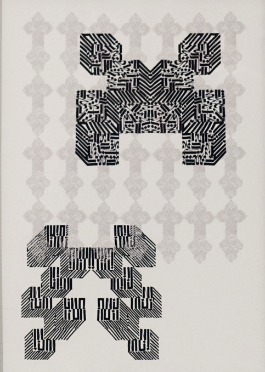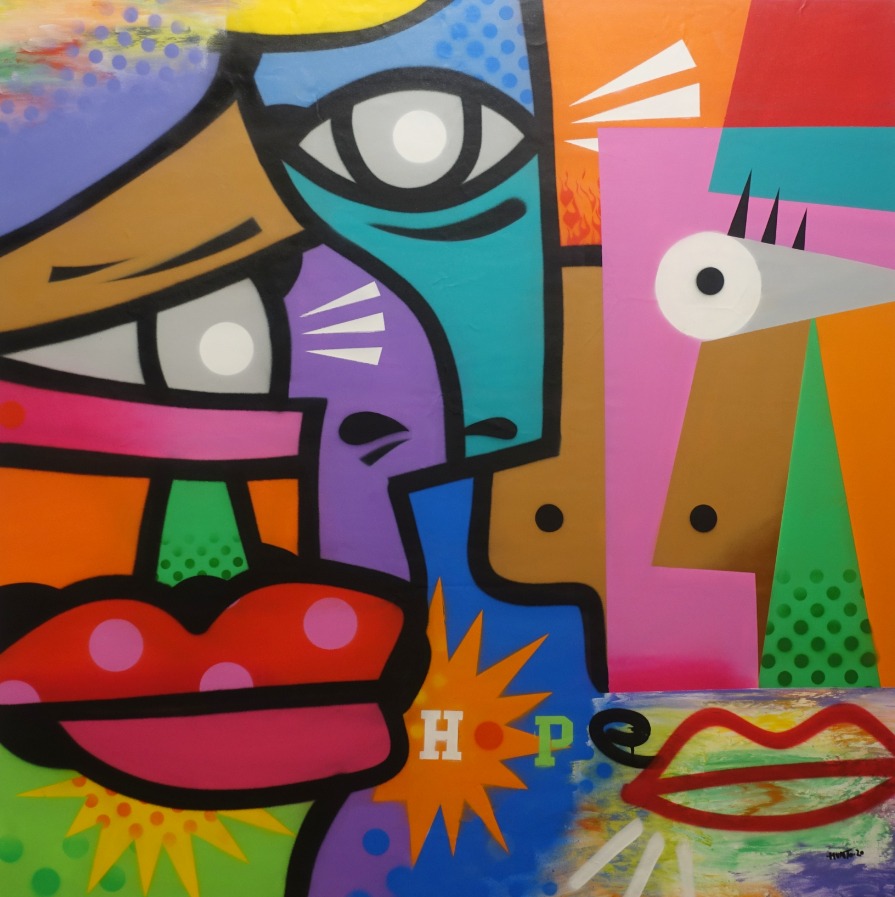HOFFNUNG, HOPE, ESPOIR, ESPERANZA, מקווה
Boicut, Johanna Braun, Max Brenner, C-Line, Maya Gelfman, Renato Hunto, Moiz, Pichardo, Tanja Prušnik und Phillip Renda.
25.06-07.12.2021
The impulse was given by David Hockney. With his remark that he did not know whether art could change the world. He does know, however, from his own experience, that art can help against despair. With this, Hockney says: art can give hope. It frees us from conditioned patterns of thought and representation. It surprises, shows new perspectives, inspires, stimulates new insights, thereby showing ways out of perceived hopelessness. Art thus creates confidence. It gives courage and joie de vivre.
That is why we have asked artists with whom we work to create a work for an AG 18 exhibition that expresses hope for them and can therefore possibly also give hope to others.
Art does not represent reality. It shows how an artist feels about reality and how reality could be shaped. No painting is documentation. Even so-called photographic realism is creation. Interpretation. A personal statement about reality. Art is, as Gerhard Richter said, “giving meaning, shaping meaning” and thus “the highest form of hope”.
The approaches we exhibit are very personal and very open-hearted. Hope thrives with curiosity, openness and – in community – tolerance. The pictures, each one in itself, are a statement and an offer. Because they have something to tell us.
The pictures and installations in the exhibition invite us to take a closer look. They do not lead us into dream worlds. They do not suggest simple solutions. They do not rely on suggestion or autosuggestion. They do not appeal to faith and do not promise us salvation through faith. They show us different facets of life, on different levels, and always question what we hope for. In this way, they offer us reflection and thus new hope. In the spirit of David Hockney.
Hope means: having confidence that the future will be good, that what we wish for and what we strive for will come true. Hope is based on expectations. That we will find ways and means to overcome difficulties and achieve set goals. Hope is not certainty. It does not exclude doubt, worry and fear, but it does not leave room for all such feelings. Hope gives comfort and energy. It strengthens endurance and resilience. It protects us from being absorbed by passivity. In passivity, we give up our efforts to change what is bothering us. We no longer believe we can achieve goals. Hope detaches us from the fixation on threat and danger. It helps us to broaden our view, to change our perspective, to change our assessments, to discover possibilities for action and resources with which problems can be overcome. Hope is a feeling. However, it can be fed by reasonable insights. That is how it is founded. Hope gives the strength to achieve something that cannot be achieved without hope.
Illusions have only flimsy justifications. They cultivate fantasies, wishful dreams. But in fact there is no way to reach the desired goal. There is nothing practical one can do for it. One might imagine that praying helps. This, of course, presupposes a belief in a higher being, or in higher beings at all, who have our fate in their hands. Agnostics do not categorically exclude their existence, but would not pray to an authority whose existence is uncertain for them. Atheists, of course, consider this to be completely pointless. They do, however, cherish hope.
Hope is the opposite of despair. To despair means to abandon all hope, to feel powerless, that is, despondent and helpless. Nothing inspires. Nothing delights. Helplessness leads to aimlessness, resignation and finally depression. Following Ernst Bloch and in contrast to Nietzsche, we can thus declare hope to be a principle – it says yes to life and does not surrender to torment.
Michael Schmitz, AG18
C-unst masks and sledi_spuren: The artist Tanja Prušnik used the secluded time in her studio for a topically relevant art project. Her C-unst masks were created in response to a request for artistically designed masks. The idea for the unique folded masks came to her while she was contemplating an art project that took place about nine months ago: the rose napkin she designed, Edition 14/edicija 14 – a paper napkin designed by her whose use was left up to each individual – from napkin to collector’s item. It was obvious that a napkin would make reference to the part of the face that was now to be covered.
Prušnik now turned the remaining specimens into individual masks. “I have been working with folds inspired by the origami technique for a long time. This was already used in 2015 for the small series Manga. Through unique bends, creases and folds, a multiple becomes unique. No two masks have the same folds,” says the artist. Now the masks are a work in a corresponding object box.
Tanja Prušnik
























